
STANAGE : The Definitive Guide, reviewed by Dave Gregory
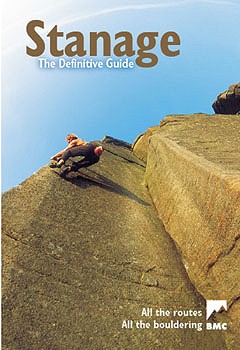
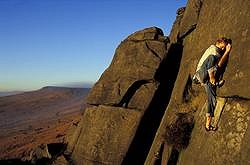
The photo-diagrams themselves are clarity itself; the descent arrows are useful but don't fly down in an arc orbit - pick your way carefully, the rescue helicopters make a terrible noise and upset the hang-glider pilots. The two-page-wide shot at the foot of the pages starting each section of the succession of buttresses in that section is very useful for newcomers to the crag. It is a pity that we shall not see again Malc Baxter's superb line drawings but the photo-diagrams are superb; time and technology march on.
It is pleasant to leaf through the guide and the first (xxxiii) pages of the Introduction are worth reading for the range of useful information. The maps of the approaches and the edges sections (x to xii) are brilliant. The transport passage will be useful as petrol gets rare or expensive. However you won't get many busses from the drivers unless you are one of the young women of whom, at long last, we are starting to see photos in the guidebooks. Still the History, by Viv Smith (page xxiv), will interestingly fill a bus ride. Protection users are catered for in the Climbing Notes (xvi) and boulderers have their special provisions explained on pages (xvii to xx). These include the V grading system and Fontainebleau-style bouldering circuits.
As a one-time guidebook man I was happy to find hardly any typographical errors (mistakes) and that no longer do the routes themselves climb or traverse. You do that. I like the two-column pages and that some notorious sand-bags have had their grades raised. Saliva for a start. Occasionally a description will admit that the climb is harder for the less tall, Cave Arete, for instance, being allowed to be 5b. I admit that I like the idea of the recurring selections of five favourite climbs by a wide range of people although why the writer of this review, Physics teacher that he used to be, can't count five accurately is puzzling (Read Dave Gregory's 'Old Man's Favourites on page 260...ed). It is a pity that a couple of climbers more used to climbing the lower grades couldn't have been found to give their choices.
In what is almost perfection there are two weaknesses. It won't fit in your back pocket and if you leave it displayed on the pile of gear you have left at the crag foot it is attractive enough to get pinched. You have been warned.
I don't know how many copies the BMC have had printed but they will assuredly sell like hot cakes. Get off to the shop and buy one quickly before they've all gone. Buy two. One for the bookshelf or the valuables safe and the other for the crag. Look at page (vii) to see what happens to that one after your scores or more of visits.
I will repeat here for the young cynics at one end of the age spectrum and others at my end of it with severe memory loss what I opened with.
This is as good as guidebooks get to an almost unique crag with about 1500 routes
across the grades on God's own rock. Get one.
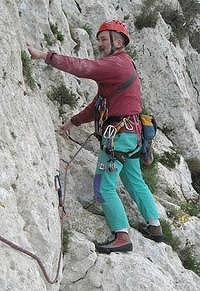
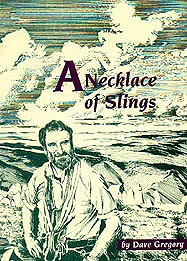
He's climbed globally in France, Austria, Spain, Italy, Greece and has made several trips to the USA. He started, like many, with mountaineering trips to the Alps and the Dolomites. It was in Chamonix in 1959 with Jack Soper during the worst weather seen that he said, "Jack, we could be in Cloggy in three days," and off they sped to North Wales making early ascents of White Slab and Lithrig that started the "demolition of the myth" that had surrounded these routes that had been put up by the Rock and Ice club, especially by Joe Brown.
For many years he was he was the BMC guidebook chairman, series editor and editor, working on the Froggat guide and significantly was the editor of the 1976 Stanage Area guidebook (Rock Climbs in the Peak, Third Series, Volume 1). He was nearly thrown off the guidebook committee by Geoff Milburn when Dave controversially upgraded Sunset Slab at Froggat from VS to HVS, the grade still stands. The BMC eventually gave him an honoury life membership. In 2002, aged 67, he survived a near fatal fall off Central Route at the Roaches and spent ten days in intensive care but made a full recovery. He is off to California this summer, to Lover's Leap and will be climbing with his old friend Bob Walton and teaming up with Yosemite legends, Alan Steck and Steve Roper. Dave said that he will be quite glad that on this trip he will be one of the youngest and won't be responsible for upping the average age of the team.
Dave has been writing for as long as he has been climbing and has written a book of climbing short stories, A Necklace of Slings, which is a mix of fact and fiction from his climbing life (You can buy it at www.ernest-press.co.uk). He is affectionaly known as one of British climbing's wonderful eccentrics.
STANAGE : The Definitive Guide, reviewed by Mick Ryan
Being a Northerner, I don't know Stanage very well. But with the publication of the BMC's new definitive Stanage guidebook I might have to start travelling south to the Peaks more often. This guidebook inspires, as any good guidebook should. I just spent a couple of days helping Mike Robertson and Alan James edit their new deep water soloing book. The imagery is stunning and now I want to go soloing above the briney blue sea, similarly I want to pad up gritstone slabs and grapple with painful jams above "brown peat and purple heather" as Jim Perrin so eloquantly waxes.
I concur with Dave above, as a definitive guidebook in the UK this is as good as it gets, although we are lucky in the UK that there are so many good guidebook producers; the FRCC, YMC, Ground Up, Rockfax, Cicerone, on a good day the CC and the SMC.
All the boxes are ticked and buttons pushed; a superb set of maps and directions not drawn or written with the author wearing local's goggles, colour of course which is now standard, and importantly the route information on the same page as the photo-diagrams. These are now the fundamentals of modern climbing guidebooks.
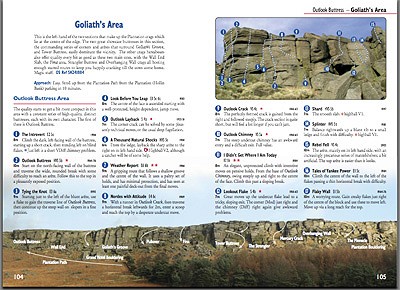
This is a community produced guidebook, and this is an important point. Whilst the very talented Nial Grimes has edited the book, and has travelled fast up the steep learning curve of modern desktop publishing software and well established design concepts, it is notable that there is no author credit on the front cover. This is how it should be for a definitive guidebook published by those who represent us, the BMC. Grimer has no doubt steered the project and his talented touch as regards rich content is imprinted everywhere, but like all good editors his touch is light (but thorough) and he lets the contributors, our community shine through. This is more than just guidebook, more than a ticklist, a set of directions, it is a novel told by several storytellers at the same time, weaving an elaborate and engrossing story using words and pictures. The photography is stunning, and they are not of or by the same old faces; the net has been cast wide; from old archive shots of nailed pioneers to tight facial shots of grimacing boulderers. No laziness here by relying on a select few and thankfully not many photos of celeb' climbers taken by a celeb' photographers, or those annoying shots of E7 leaders posing up a Diff to keep the sponsors happy and in touch with the 'punters' - how I hate that word. Lots of beautiful labelled crag photographs make buttress identifiction a breeze.
Historical essays and quotes by many contributors recount tales of first ascents and periods of climbing history, all finely put into context. My favourites are 'Conquering the Unconquerables' on page 188 and Neil Foster's tale, 'The Nine o'Clock Watershed' on page 269. The Favourite Five, where many authors who love and have loved Stanage describe their, well, favourite five Stanage routes, makes interesting reading, sometimes personal commentaries, sometimes just short lists, sometimes not a list at all, and many of them made me laugh, especially the one by Johnny Dawes on page 312 and the flippant comment about 'a set of keys' in Seb Grieve's Fave Five on page 263. You can almost imagine Grimer reading through his emails as these contributions came in. A nice whimsical touch when done in moderation.
I have two criticisms. Like the new Burbage, the size of Stanage is bigger than standard guidebook size, a jump from 105 x 170 mm (foolscap or 4 3/4 x 6 1/4 in old money) to 135 x 185 mm. This maybe a compromise to tradition, after all we don't want to send the old guard into tremors with too many innovations. In my opinion they should have gone the whole hog and gone for A5.....148 x 210. A5 can still fit in the lid of a rucksack (Notice the two ks?) and as this is an outcrop guide carrying the book up the route with you is not an issue. This wouldn't please Dave Gregory however as he has a bookshelf packed with guidebooks, a bookshelf that only fits the traditional foolscap size. Now with the Stanage in a larger format he is going to have to do some DIY! Size is important, small is sometimes good, but in this case a bigger page size would have doubled, nay tripled the impact of the photographs and varied text. Bigger would have showcased better the considerable work, effort and talent that has gone into this production. My second criticism is again related to size. A5 would have given space to put the first ascensionionists names next to the route descriptions. There is a great annotated first ascent list in the back of the book which gives a great read and next to each route description in the main route text is the year of the first ascent. It would have added greatly if whilst scanning the route photo-diagrams and reading the route description if the first ascensionist had been proudly displayed there as well. An illustrated timeline of significant ascents would have been a good idea too, and maybe some profiles of Stanage's major 'players'.
Colour-coded bouldering circuits too. Where does Grimer think Stanage is? France! Great for spreading the load, for introducing climbers to the parts of the crag that they wouldn't normally reach. Colour-coded bouldering circuits are't a new idea for a guidebook. In fact there is nothing revolutionary in any of the features of this guidebook, all have been done before. What Grimer and team have done is bring everything together in one place. This is another leap forward in guidebook production in the UK.
Stanage is a brilliant guidebook that does the Queen of Gritstone justice and Grimers hope that for some climber "this will be the guide with which they get into Stanage" will be true, just like when he began his love affair with Stanage using Graham Hoey's 1989 guide.
With this guidebook the BMC Guidebook team have finally rid themselves of their dysfunction which plagued them for so many years. Now maybe that other guidebook family, the Climbers Club, should put themselves through similar therapy. Maybe the CC troubleshooters of Mark Vallance and Smiler Cutherbertson will take a leaf out of this latest BMC opus.
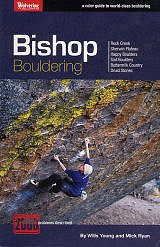
MORE STANAGE STUFF
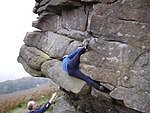
Did you know that?
Read more Stanage facts from Offwidth and others at www.ukclimbing.com/forums
Stanage: The Definitive Guide
edited by Niall Grimes,
published by the British Mountaineering Council
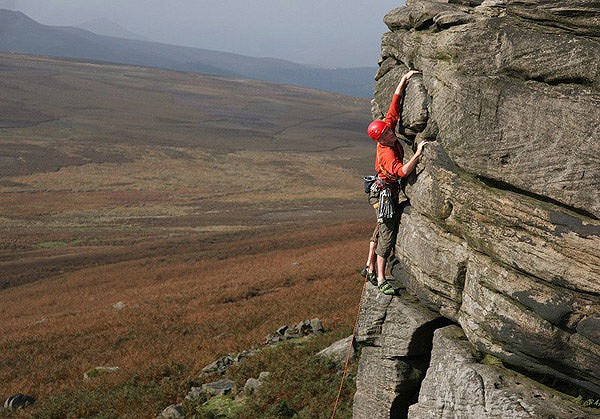
ISBN: 9780903908085
No of Pages: 350
Page Size: 135 x 185
Featuring
Bouldering circuits
A brand new development, and the first for British guidebooks, is a series of bouldering circuits, mapping out collections of problems at similar levels. Three of these circuits are centered around the Causeway/Counts/Plantation areas, and two around the Apparent North area.These will lead even the most jaded Stanage devotee to areas and problems they have never seen before, giving unique and tiring days out.
Superb action photos
A great collection of action photos, both in colour and black and white, has been assembled, and perfectly illustrates the variety and quality of climbing found on this great crag. Sowing everything from Moderates, such as Grotto Slab, to the desperates, such as Mother of Pearl, never before has Stanage been shown in such glory. Many great photographers have contributed their work, including John Beatty, Pete O'Donovan, Ray Wood, Nick Smith, John Coefield, Alex Messenger, Adam Long, Gordon Stainforth, Dave Simmonite and Jamie Moss.
My Favourite Five
A random selection of the great and the good give their own personal choices of their five desert island climbs on the crag, with interesting insights into why they chose them. Contributors include Jim Perrin, Gabe Regan, Ed Drummond, Debbie Birch, Andi Turner, Lucinda Hughes, Adam Long, Johnny Dawes, Geraldine Taylor, Dave Simmonite, Seb Grieve, Offwidth and Katy Whittaker.
Download a free sample chapter now at www.thebmc.co.uk/guidebooks
Price: standard price £18.99 / £17.00 (BMC members).

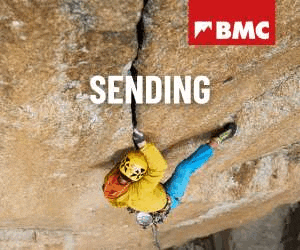







Comments